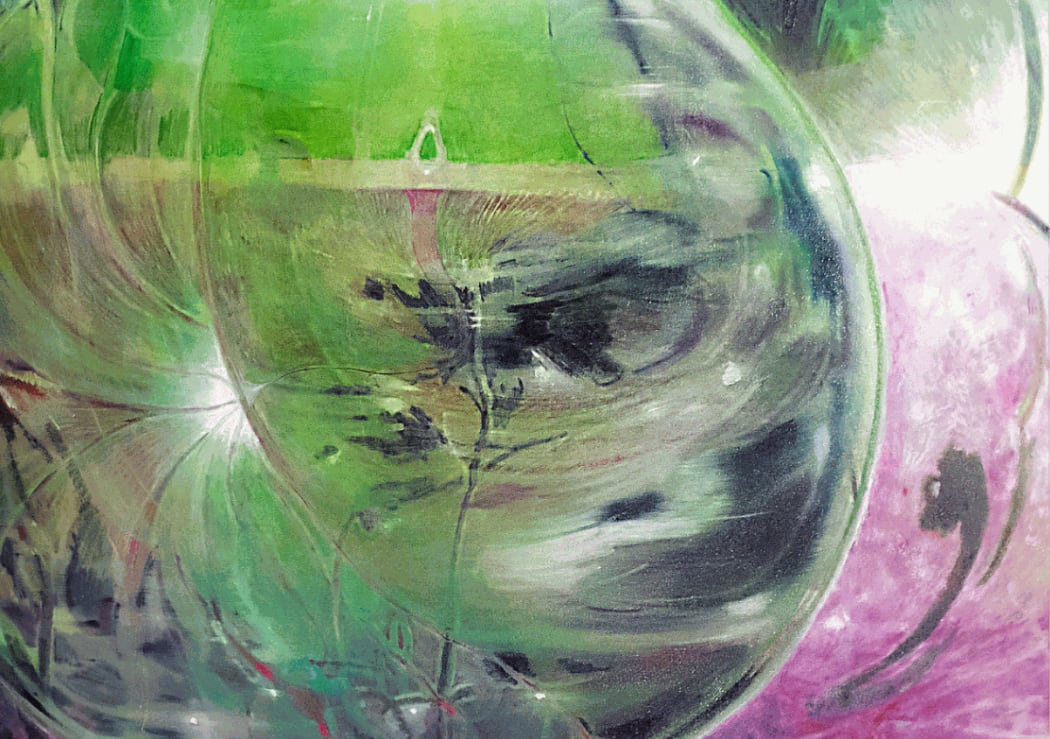
The group exhibition The Glass Bead Game at MAMOTH Gallery features paintings of 11 cross generational and multicultural artists, presenting a joyful odyssey of ‘cultural others’. The exhibition takes its name from Hermann Hesse’s eponymous novel which portrays the protagonist’s rejection and acceptance of the prescriptive life, as well as the ideological birth of collective illusion and self-consciousness. Many works on show are analogous, reflected in their subject and silhouette, sequences and still images, through gestures of realism and abstraction, erasing the legible and narrative logic, so as to produce new perception. As Homi K. Bhabha put it, “diaspora identities are those which are constantly producing and reproducing themselves anew, through transformation and difference”. Within the collective memory, the displaced subjects situate themselves in the shifting identity politics by recalling the bygone past.
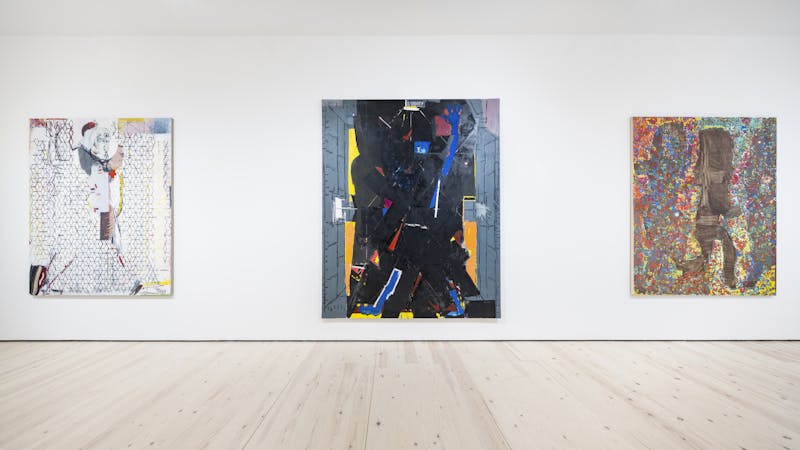
Sangram Majumdar as part of the group exhibition 'The Glass Bead Game', installation view, MAMOTH.
Based on affective experience, Sangram Majumdar deconstructs everyday images into indescribable abstract forms - echoing lines, bare charcoal sketch, and pale, flat, unmodified colours – vividly figurative. In oil painting on canvas Becoming 1 (2021), Majumdar borrows the lozenge array with interlacing light and shadow projected from streetlamps on the road, that is commonly seen in American streets, covering a walking and elusive subject. Using visual disorientation generated from ideogram, he has reappeared the cultural consciousness in the identity of the diaspora, as well as its absence in the collective memory. The only things clearly visible in the picture are the subject's feet: the left foot wearing vans shoes signifies the pop culture, while the bear right foot indicates the barefoot Buddha in Hinduism. By incorporating analogous motifs implying both the worldly ideology and cultural believes, Majumdar depicts the coexistence of the spiritual world and the secular world that Hesse has contemplated in The Glass Bead Game.
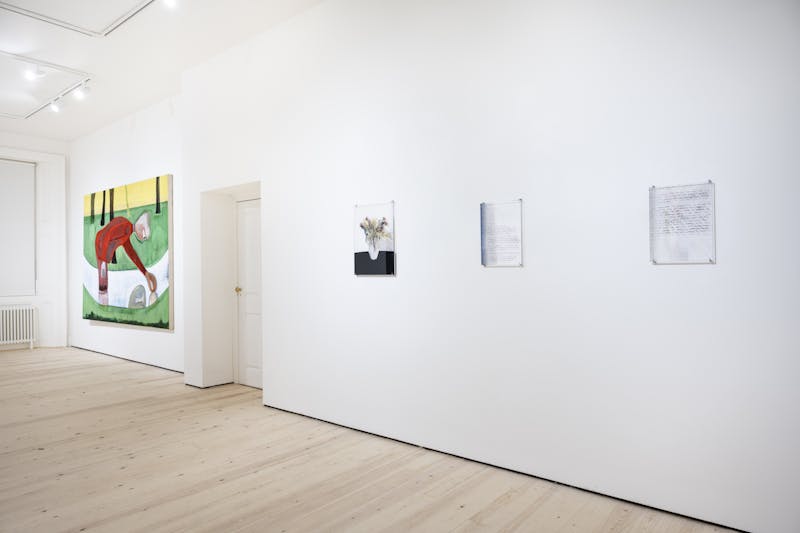
'The Glass Bead Game', installation view, MAMOTH.
On the other side of the gallery, an unsettling sensation is intensified by the red, green and yellow distemper in Vicente Matte’s painting, exuding a fantastical feeling in the space. The static allegorical figure seems to be with childishness but is gradually disenchanted as one dwells. Furthermore, the ‘Notebook’ series by Yuki Higashino intuitively deconstructs the logic of interpretation. He applies coloured dots on the superimposed plexiglass to form the text, a linguistic structure is then repeated and staggered densely. As an abstraction of memory, painting has a visual language that is not limited to the scope of sight, as sight can only frame a glance.
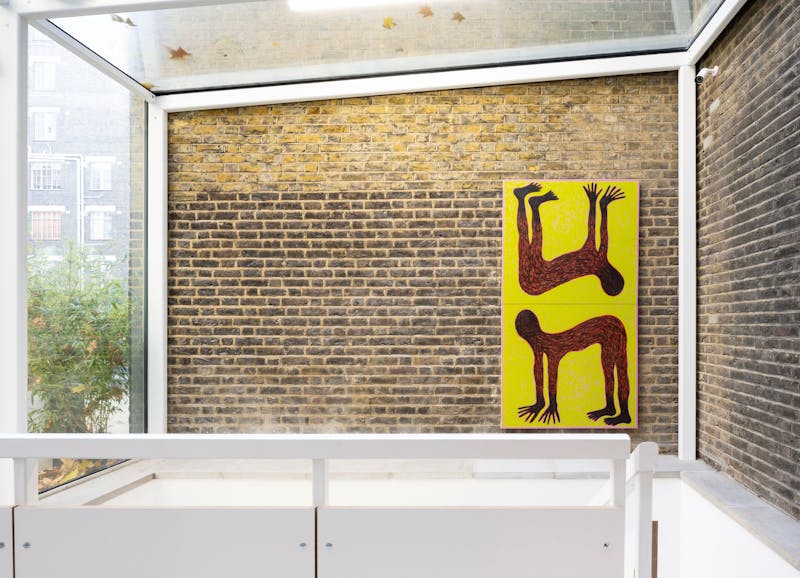
Aman Aheer as part of the group exhibition 'The Glass Bead Game', installation view, MAMOTH.
The layout of the exhibition is deftly combined with the wall’s texture of the building itself. On the brick and tile wall in the staircase space, the view from the window recorded by Yuki Higashino during his quarantine in New York is in contrast with Aman Aheer’s half man and half beast image disciplined by the frame on the opposite wall, which intuitively conveys the boundary logic of the narrative subject. The repressed ‘alienated selves’ continue to be released through painting until the steps rise to the exhibition hall on the second floor. In Hou Zichao's landscape painting with the characteristics of the times, the dot array is located on the unrecognizable view fragments and striking hues, reminding the viewer of the gradual elimination of the opposition between the fictional and reality. In the smaller room on the side, a quiet gaze replaces the previous restlessness, as if those unsettled emotions have finally landed on a ground.
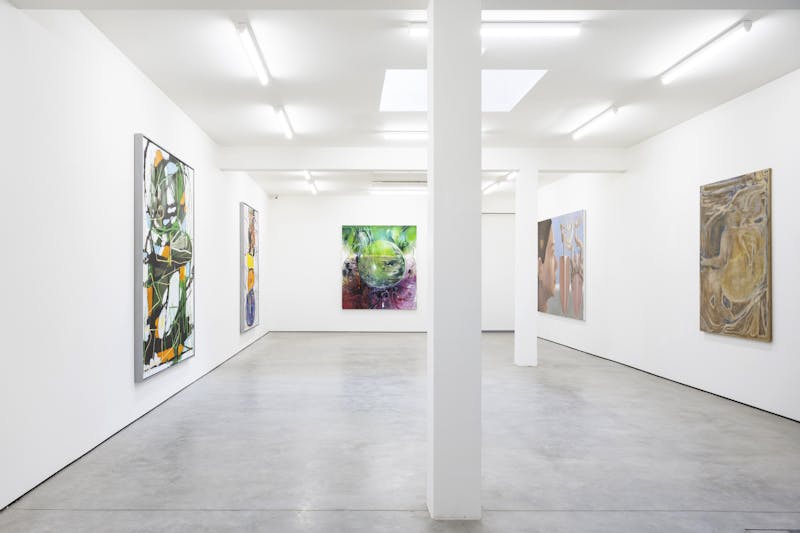
'The Glass Bead Game', installation view, MAMOTH.
Down to the basement, a more vibrant visual pattern speaks. From a vague dreariness to a cold and surreal detachment, from the palette of Dunhuang murals to the mood board of 80s Hong Kong films, the ghost of modernity peeps through the imagery, endowing it with a rare agency. What’s gratifying is, the exhibition attempts to explore the enigmatic relationship between myriad-hetero cultural identities and globalisation. The way that the artists deal with the world is latent in the cause and effect, significance, and styles of their works. While the interpretation of the semantic space is indicatable, identity and cultural dynamics can retain the opacity through visual reoccurrence of the painting. When accelerationism leaves us no time to think, it is a bless for both the artists and viewers to be immersed in this Glass Bead Game at MAMOTH where all the turbulent feelings are calmed. As we arrive in spring anew, The Glass Bead Game has presented us a speculative sobriety.